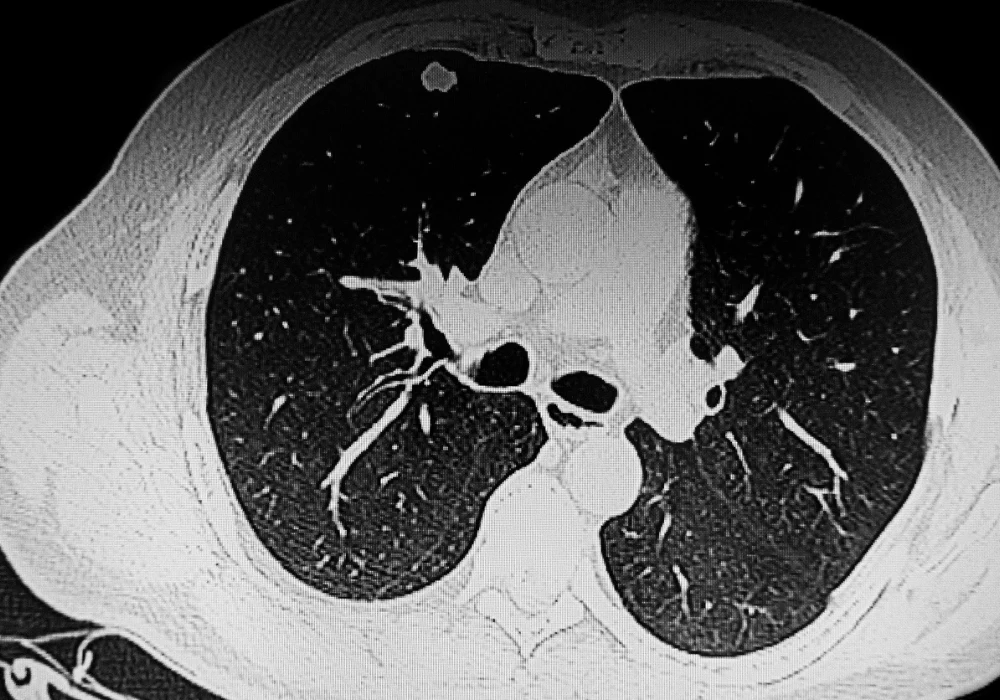Lung nodules, defined as small masses of tissue within the lung measuring up to 3 cm in diameter, are frequently identified during routine chest CT scans. These nodules are significant because they can be early indicators of lung cancer. However, most research and clinical guidelines have historically focused on high-risk groups, particularly long-term smokers. The prevalence and characteristics of lung nodules in nonsmoking populations remain under-researched, especially in Western countries. This article explores the findings from a comprehensive study conducted in the Northern Netherlands, which aimed to understand the distribution of solid lung nodules in a nonsmoking population by age and sex. The study's findings have important implications for how lung nodules should be managed in nonsmokers.
Prevalence of Lung Nodules in Nonsmokers
The study, part of the more extensive Imaging in Lifelines (ImaLife) project, involved 10,431 participants aged 45 years and older who had never smoked or were former smokers. These participants underwent low-dose chest CT scans to detect and measure lung nodules. The results revealed that 42.0% of the participants had at least one solid lung nodule. The prevalence of lung nodules increased significantly with age, starting from 33% in the 45-49.9 year age group to over 50% in participants aged 80 years and older.
Men were found to have a higher prevalence of lung nodules compared to women across all age groups. Specifically, 47.5% of male participants had at least one nodule, compared to 37.7% of female participants. Differences in previous smoking behaviour could partially explain the higher prevalence in men, as men in the study were more likely to be former smokers with a higher pack-year history than women. However, even among never-smokers, lung nodules were common, indicating that other factors, such as environmental exposures or genetic predispositions, might also play a role.
Nodule Size and Clinical Relevance
Beyond mere prevalence, the study also examined the size of the detected lung nodules, as size is a crucial determinant of clinical relevance. Clinically relevant nodules were defined as those measuring 100 mm³ or more, while actionable nodules were those 300 mm³ or larger. Overall, 11.1% of the study participants had clinically relevant nodules, with the prevalence of such nodules increasing with age. Notably, while 8.5% of men aged 45-49.9 years had clinically relevant nodules, this figure rose to 24.4% in men aged 80 years and older. For women, the prevalence of clinically relevant nodules ranged from 3.7% in the youngest age group to 15.6% in the oldest.
Actionable nodules were less common, found in 2.3% of participants overall. Again, the prevalence increased with age, with the highest rates observed in men aged 80 years and older (6.4%). These findings suggest that while lung nodules are widespread in nonsmokers, the majority are small and may not require immediate intervention. However, the presence of larger nodules, especially in older adults, highlights the need for careful monitoring and potential follow-up.
Sex Differences in Lung Nodule Characteristics
The study uncovered significant differences between men and women in the characteristics of their lung nodules. While men had a higher overall prevalence of nodules, the nodules found in women tended to be larger when they were present. For instance, the median volume of clinically relevant nodules in women was consistently higher than in men across most age groups. This suggests that even though fewer women had nodules, those detected were often of greater concern.
These differences may be influenced by various factors, including differences in lung anatomy, hormonal influences, and possibly even differences in the biological behaviour of lung nodules between the sexes. The study's findings highlight the importance of considering sex-specific factors in assessing and managing lung nodules, particularly in a nonsmoking population. Given that women may present with fewer but larger nodules, it may be important to adopt a more tailored approach to their diagnosis and follow-up.
Conclusion
The findings from the ImaLife study provide critical insights into the prevalence and characteristics of lung nodules in a Northern European nonsmoking population. The study shows lung nodules are common even in nonsmokers, with prevalence increasing significantly with age. While most nodules are small and may not require immediate action, a substantial proportion of the population, particularly older adults, has clinically relevant or actionable nodules that warrant further investigation.
The study also underscores the importance of considering sex differences in lung nodule management. While men are more likely to have lung nodules, women tend to have larger nodules when they are present, which may have different clinical implications. As the use of chest CT scans continues to rise, these findings highlight the need for updated guidelines and diagnostic strategies that address the specific needs of nonsmokers, who are increasingly being identified with lung nodules.
The ImaLife study provides a comprehensive overview of lung nodule prevalence and characteristics in a nonsmoking population. These findings suggest that while lung nodules are often incidental and benign, careful assessment and follow-up are necessary, particularly for older adults and women with larger nodules. Future research should focus on refining screening and management protocols to better address the risks and needs of this growing population.
Source Credit: Radiology
Image Credit: iStock






